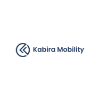LS-DYNA for Structural Mechanics/FEA
RELATED RECENT PLACEMENTS
Anupama Yeragudipati
Kabira Mobility
Gurunanak Khalsa College


Arun Kumar
Riverstone
Anna University

Paul Willington
DGS Technical Services Pvt. Ltd.
SAVEETHA SCHOOL OF ENGINEERING ,CHENNAI

IVIN TROY
Kabira Mobility
College of Engineering and Management,Punnapra

Karuthapandi K
DGS Technical Services Pvt. Ltd.
S. Veerasamy Chettiar college of engineering and technology

Gowsikraj M
Hyundai Motor India Ltd
Sri krishna college of technology


Mujahidoddin Saudagar
Hyundai Motor India Ltd
G.H Raisoni college of engineering and management Amravati


Krutika Ravikumar
Genpact
R.V.College of Engineering
Syllabus
This course is full of best-in-class content by leading faculty and industry experts in the form of videos and projects
Course Overview
- A rigorous understanding of how LS-DYNA works and how to work with the program to exploit its full capability.
- Understanding the difference between implicit and explicit solver and their applications
- Deals with complex industrial problems.
- Contact and material modeling (including hyperelastic materials).
- Gain industry-related best practices.
Course Syllabus
On a daily basis we talk to companies in the likes of Tata Elxsi and Mahindra to fine tune our curriculum.
Week 01 - FEA Basics and Simulations
- In this module, you'll learn the basics of FEA, various types of simulations, and their significance, and also develop a mathematical understanding of the implicit and explicit schemes.
- The topics that will be covered in this module are
- Introduction to FEA
- Type of FE Simulation
- Explicit and Implicit mathematical definition
Week 02 - LS-PREPOST Deep Dive
- In this module, you will learn about the LS-PrePost and the LS-DYNA user manuals. You will also be learning about the file handling in LS-PrePost, an overview of various cards, and finally, running a Tensile-Test simulation.
- These are the topics that are covered in this module.
- Brief about the Pre-Process
- Hands-on training on the LS-DYNA User Manual
- Running an example
- Post-processing the results
- Input and output files in LS-DYNA
- Keywords and input text editing
- Multiple RUNs on the same file in the same folder
- Hands-on with the output files (ASCII output) in the text editor.
- Exploring binary and ASCII options in database keywords
- Node keyword – Brief
- Part keyword – Brief
- Materials
- Section
- Control cards – default parameters
- Contact
- LS-PrePost
- Building the solver deck for a simulation (Plate Model)
- Post-processing the results
- Modeling the cube under pressure
- Modeling the tensile stress of a specimen
Week 03 - Keywords, Timestep and more
- In this module, you will learn a few new keywords in detail.
- You will learn about the hourglass energy, material keywords in LS-DYNA, methods for calculating Young’s Modulus, the basics of the timestep concept, and various control keywords.
- These are the topics that are covered in this module.
- Brief on keywords
- Brief on *INCLUDE keyword
- Insight of NHTSA
- Hourglass energy
- Materials introduction
- Elasto-plastic material and various cards
- Material testing
- Calculation method for Young’s Modulus
- Power law
- Verification
- Deploy
- Timestep basics
- Control Card
- Control Timestep
- Control Termination
- Control Shell
- Control Solid
- Control Hourglass
- Control Energy
- Control Contact
- Control Accuracy
- Boundary Condition
- Constrain
- Specifying output files
- Understanding contacts
- Various types of contacts
Week 04 - LS-PrePost GUI and Weld Modelling
- In this module, you will learn in-depth about the LS-PrePost GUI. You will also be introduced to weld modeling in LS-DYNA and methods to model spot welds and debugging. You will also learn how to model a cross-section and its application.
- The following topics are covered in this module:
- LS-PrePost GUI
- LS-DYNA GUI application
- Node and element selection
- Application crash, metal forming
- Element direction align
- Post-processing
- Node intrusion depending on the regulation
- Introduction to Spot-Weld in LS-DYNA
- Hands-on practice on Spot-Welds
- Solving a simple problem to learn the Spot-Welds and then Post-Processing it.
- Modeling Spot-Weld using Spot-Weld constraint card.
- Modeling Spot-Weld using Spot-Weld generalize constrain card
- Debugging Spot-Weld
- Spot-Welds modeling using solid elements
- Introduction to Cross-Section
- Modeling a Cross-Section
- Application of Cross-Section
Week 05 - Implicit Simulations
- In this module, you will learn about the implicit problem and how to set up an implicit simulation. You will also learn about the memory allocation in LS-DYNA, the concept of convergence in implicit simulation, various keywords used in implicit simulation, MORTAR contact, and defining the loading in implicit simulations.
- These are the topics that you will learn about in this module.
- Introduction to implicit problems
- Implicit and explicit comparisons
- Memory in LS-DYNA
- In core/out-of-core
- Double precision and MPP.
- The tensile test-simple implicit problem
- Timestep in implicit problems.
- Convergence in implicit.
- Implicit keywords
- Implicit and explicit switching
- Timestep adjusting
- Control-implicit-solver (Non-linear solver)
- The implicit problem, hands-on with a bumper demonstration
- Power law plasticity
- MORTAR contact
- MORTAR contact theory
- SOFT card - intro
- Implicit loading
- Element formulation for implicit analysis
- In this project, you will gain hands-on experience in using the *include, *INCLUDE_TRANSFORM, and *DEFINE_TRANSFORMATION and understand how to model a pedestrian head impact simulation and calculate the HIC value.
- Overview of the pedestrian impact simulation
- Understanding the HIC value
- HIC calculation - LS-PrePost
- Understanding *INCLUDE, *INCLUDE_TRANSFORM,*DEFINE_TRANSFORMATION
Week 06 - LS-DYNA Best Practices & Types of Analyses
- In this module, you will learn about the best practices in LS-DYNA that are particularly relevant for CAE simulation engineers in the industry.
- Also, the students will learn the concept of mass scaling in-depth and the difference between verification and validation.
- The topics that will be covered in this module are as follows:
- Best Practices in LS-DYNA
- Setting up the model
- How to decide the type of analysis (static, quasi-static, or dynamic)
- Dealing with the coupled problem
- Deciding the ELFORM for the problem
- Solving the model types of errors and their fixes
- MASS scaling
- Post-Processing-Introduction (verification and validation)
- Post-Processing a typical explicit model
Week 07 - Material Modelling using LS-DYNA
- This module mainly deals with material modeling using LS-DYNA. You will understand how to model a material card from the raw data from the material testing lab. You will understand in-depth material modeling techniques and will also learn how to model a hyperelastic material in LS-DYNA. You will also learn about the contact mechanics and the various contact types in LS-DYNA.
- The topics covered in this module are,
- Material introduction
- Material testing
- Modelling materials
- Elastic-plastic materials
- Material modelling from the raw data
- Hands-on hyperelastic material ( Mat-law 77 )
- Contact mechanics
- Types of contacts
- Full contact parameters
- Contact parameter - SOFT
- Segment projection
- Initial penetration
- Tied contacts
- Contact output
Week 08 - Crash and Safety
- This module focuses on the crash and safety domain where you will be introduced to the industry trends in crash and safety.
- And the topics you will learn are,
- Vehicle crash safety
- Crash mechanics
- Design for crash
- The vehicle development process
- Knowledge of simulation engineers
- Regulation and NCAPS
- Score calculation
- Model preparation: Static vs Crashworthiness
- General guidelines for crash model preparation
- Mesh and mesh quality
- Model organisation and integration
- Parameterization
- Forming data
Our courses have been designed by industry experts to help students achieve their dream careers
Industry Projects
Our projects are designed by experts in the industry to reflect industry standards. By working through our projects, Learners will gain a practical understanding of what they will take on at a larger-scale in the industry. In total, there are 2 Projects that are available in this program.
Pedestrian Head Impact Simulation on a Hood
Bird Strike on an Aircraft Engine using Shell Elements
Our courses have been designed by industry experts to help students achieve their dream careers
Ratings & Reviews by Learners
Skill-Lync has received honest feedback from our learners around the globe.

Flexible Pricing
Talk to our career counsellors to get flexible payment options.
INR 40,000
Inclusive of all charges
Become job ready with our comprehensive industry focused curriculum for freshers & early career professionals
1 Year Accessto Skill-Lync’s Learning Management System (LMS)
Personalized Pageto showcase Projects & Certifications
Live Individual & Group Sessionsto resolve queries, Discuss Progress and Study Plans.
Personalized & Hands-OnSupport over Mail, Telephone for Query Resolution & Overall Learner Progress.
Job-Oriented Industry Relevant Curriculumavailable at your fingertips curated by Global Industry Experts along with Live Sessions.
Instructors profiles
Our courses are designed by leading academicians and experienced industry professionals.

1 industry expert
Our instructors are industry experts along with a passion to teach.

11 years in the experience range
Instructors with 11 years extensive industry experience.

Areas of expertise
- FEA
Find LS-DYNA for Structural Mechanics/FEA in other cities
Mumbai
Hyderabad
Chennai
Bangalore
Delhi
Pune
Similar Courses
Got more questions?
Talk to our Team Directly
Please fill in your number & an expert from our team will call you shortly.
